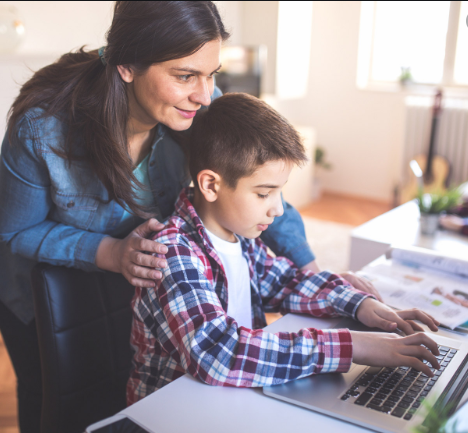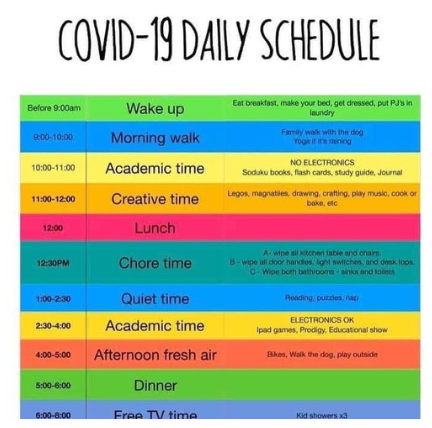Easy Tips and Tricks for Homeschooling due to Corona Virus

Parents, if you’re feeling anxious and overwhelmed at the thought of homeschooling your kids, know that you’re not alone! Here are some simple tips and excellent options for keeping continuity in your child’s learning. There are also some free resources for activities that kids will love.
1) Don’t panic
Our kids and teens need to see that we are coping well and showing resilience as new information unfolds. Be selective in what information your child is being exposed to, especially the news (try not to have it turned on in the background).
2) Check the school website
For weeks schools have been moving towards virtual and remote learning models. If your child’s school has implemented online learning, then think of yourself as a supervising teacher aide, rather than a teacher. Most likely your child’s school will provide learning materials. Also, refer to the themes/topics that are covered for each subject (this will have been issued or available at the start of the year).
All aspects of the Australian Curriculum can be downloaded as needed.
3) Create structure and routine
Both children and teens benefit from routine. Work with your child to come up with both daily and weekly goals. Ensure that your children do not view this as an extended holiday but as normal school, just from home.
Identify with your child the more challenging areas and schedule those for the morning – that’s when the brain is most alert.
Remember that this will be a new form of learning, so allow them some time to relax between learning periods. You’ve probably seen this quarantine home school schedule template that has been making the rounds on social media.

Helpful schedule for homeschooling during Corona Virus
4) Use of Technology
Try to ensure that your child has a scheduled task each day that doesn’t involve technology. When they do need to use technology, encourage them to turn off notifications and/or place their phone on aeroplane mode.
Don’t forget that our children are social beings – they will want to connect with their friends. Whether you use social media, Skype or gaming, allow them to socialise but schedule it into the day.
5) Create authentic learning experiences
Discuss ways that you can support family, friends, the elderly and others in the community. Show your children how you are shopping for your needs, not stockpiling unnecessarily, and explain why this is important. Consider ways they can help others, such as writing a letter to neighbours offering to collect medications or groceries.
6) Connect with your kids
Think of this time as a gift and not an inconvenience: go outside, go for walks, enjoy the sunshine, laugh together. No timetabling of sports, transport, music lessons!
7) Be kind to yourself
We are in an extraordinary period of time. Don’t put pressure on yourself to be the perfect ‘teacher’. Focus on your family’s well being.
FREE Resources to support your child
We searched for a number of resources that are free, fun and offer help to parents.
- Unsure if you’re showing your child the ‘correct’ way to do maths? Khan Academy is a great, free resource for instructional videos on many topics.
- Mystery Science is offering free science lessons during school closures.
- Want to combine English and art? Jarret J. Krosoczka, author of the “Lunch Lady” graphic novel series and the National Book Award finalist “Hey, Kiddo,” is hosting daily drawing webcasts on Youtube. It is suitable for all ages.
Check out our blogs for more ideas and tips.
Boys Love LFB – Here’s what they have to say!
Get boys reading in the digital age
Why write? Tips for reluctant writers
Brought to you by Tanya Grambower
